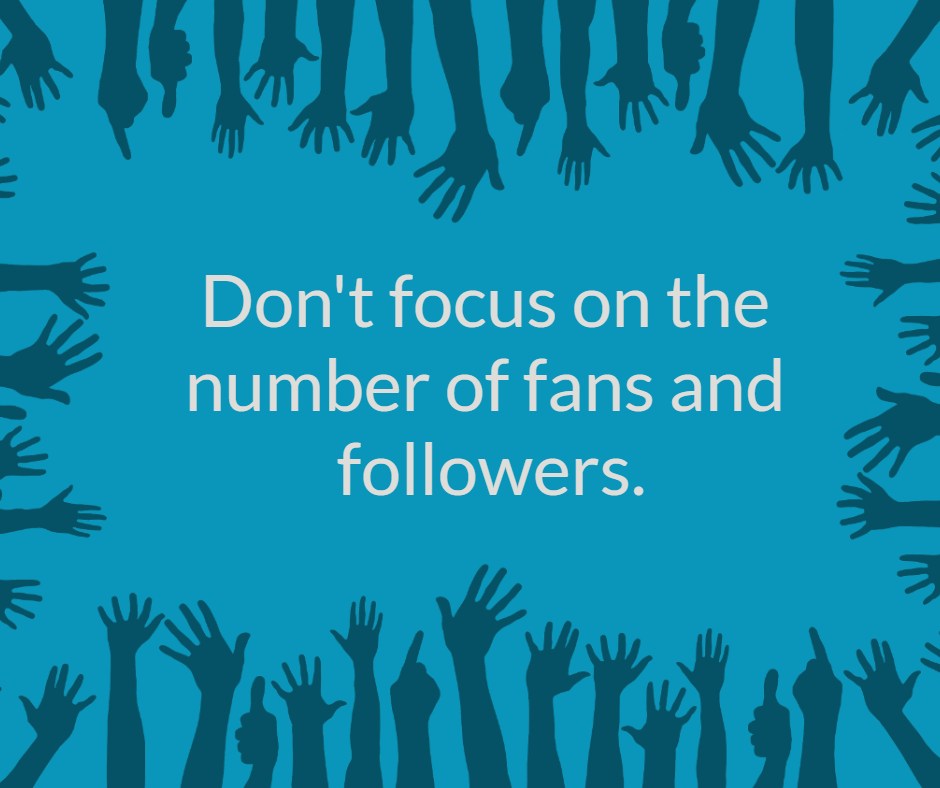
by Cori-Leigh | Blogging |
The idea of starting a new blog is exciting! This initial enthusiasm quickly turns to frustration when we realize the many details involved. Designing and customizing a blog is often a challenge for many beginner bloggers.
In this post I share how you can quickly start, create, and launch a blog that looks pleasing to your readers. One that is easier for you to manage when completed. Using a simple start design that works. You can easily build on it over time. It doesn’t have to be perfect!
I remember starting my first blog. As a writer all I wanted to do was write. I didn’t know the first thing about how to begin designing my blog. Visitors would see my site disaster then quickly run for the hills! All I’d seemed to accomplish was a ton of mounting frustration, overdoses of discouragement, a site that looked awful, and nothing was working right!
In this post I provide tips starting a blog with a simple clean design.
1. Why begin with a simple and clean design?
Creating a simple design is the best way to start. In the beginning less is more. Nothing fancy. Especially if you don’t know what you’re doing yet.
Of course we all want great looking blogs. It’s easy to look at the big picture. When we do this we fail to understand the importance of the small steps that lead us where we need to be.
We have to simplify our mindset. If we don’t do this then we can’t enjoy the process of starting a blog. Instead of enjoying the process of starting a blog we can become overwhelmed and stressed.
First impressions count. Have you ever heard the saying, ” You never get a second chance to make a first impression?”When someone visits your blog for the first time they will formulate what they think at first glance.
This is another great reason for a creating a simple start design. By making your blog pleasing for everyone you will be sure your visitors will appreciate it. You’ll have succeeded at making a great first impression!
7. Blog Page
8. Blog Posts
If you want to design a header it is best to keep this simple also.

by Cori-Leigh | Blogging, How to Be Blog Post Prepared For When Life Gets Busy |
I remember when I started my first blog. It was a happy moment! Filled with a few posts and an about page to begin my blogging journey. This enthusiasm lasted for a while. Then what happened next was my world got busy. I struggled to keep up with the pace of creating regular blog posts. Have you experienced this yourself?
There is a countless number of thriving successful blogs. There are equally a large if not larger number of failed blogs. Many of them died out because these bloggers didn’t produce consistent content.
So how do you be blog post prepared for when life gets busy?
Don’t let being busy stop you from blogging.
Life gets busy. We get sick sometimes. Emergencies and other demand of life arise.
It helps to develop a method that works for you to push past distractions and obstacles.
When life gets busy and chaotic our minds get full.
Professional bloggers and writers do the following;
- Write when they don’t want to.
- Write in the midst of pain and life’s storms.
- They’ve developed strategies, habits, and routines that work.
- They create content even when life is crazy and doesn’t make sense.
- Don’t give up even when discouragement tells them to.
- Successful bloggers and writers don’t isolate and are part of communities.
- Consider accepting guest posting contributions on your blog.
Make time.
How do you make time in your busy schedule to write blog posts? If you want to grow and succeed as a blogger then you’ll need to be committed to your blog. That means making time to write and publish blog posts. Our loyalty is to our readers. They want content. That’s why they visit us. The more you write and publish blog posts the easier it becomes.
The Benefits of Batch Writing
Creating blog posts in advance is a great method of content creation for every blogger. Doing this enables you to be prepared for those busy seasons of life. As bloggers and writers, we have many things to do and write about. Batch writing helps so much to prevent lack of content and blogger discouragement. I love batch creating content!
Keep a record of blog post ideas.
Record your ideas somewhere. I write down all of my blog posts and other writing ideas as they come to me. I use a small notebook which I carry in my purse. Handy for those times I don’t have a computer with me. When thoughts come I can write it down no matter where I am. Whatever you find easiest to do will be what works for you.
Schedule one month of posts in advance.
An easy way to post regularly is to write 4 posts one Saturday and publish them every Thursday for a month. My friend Greg the founder of Dear Blogger has a guest posting routine where the posts are scheduled for publication every Wednesday. Same day and time every week.
The main point here is to create a blog post routine in a tempo you can manage and stay consistent with. Consistency is more important than frequency.
Have backup posts ready.
Before I began writing backup posts I was always running out of content for my blogs. Usually, when this happened I wasn’t in the mode to quickly write a post. This used to bother me and cause me to question whether I really was a writer and blogger at all. Keeping posts on the backburner for those times when the post well is dry helps tremendously!
If you do this regularly you’ll discover as I did how much time this saves in the long run.
Additional Reading: 10 Blogging Practices That Work: How to Create Blog Content
Conclusion
I haven’t met many bloggers serious about writing and blogging who want their blogs to fail.
We all want our blogs to thrive and grow.
You’re well on your way to creating more content than you ever dreamed you could.
Keep writing and blogging friends!
Join the conversation
How do you create time to write when life is busy?
What are a few things that help you create blog posts regularly?
Do you have a blog posting routine?

by Cori-Leigh | Blogging |
Do you find it difficult to write and publish posts to your blog regularly? Many bloggers complain they simply struggle to find the time to write. For these bloggers they face feeling stuck and discouraged. The great news is you can develop a blog posting routine easier than you may think!
You don’t have to write extra long posts of a few thousand or more words. It’s better to practice writing well and produce shorter posts starting out. Posts of 600 words are a great exercise. Doing this will help you to become a skilled writer. Helping you to write with brevity and create quality content.
It takes time to develop the skill of writing and publishing regularly. We can’t get better at anything unless we learn to enjoy the process. The most important thing is to start writing daily. Consistently publish content to your blog!
 Set aside time to write daily.
Set aside time to write daily.
Do you wait for the inspiration to write? If you wait you may be stuck for quite a long time! Writing doesn’t flow freely unless you take the first step!
You have to show up and be committed to the act of writing everyday. Professional bloggers write daily even if they don’t want to.
Decide on a time and place that works best for you to write. Doing this helps you to take your writing seriously. Write intentionally and with purpose. It won’t take long to get into the correct mindset. In time you will develop a daily writing habit.
What has helped me is using a kitchen timer for 15 – 30 minutes. I’d refuse to stop writing until the timer goes off. By that time the words are flowing freely. I can continue writing until the post is done! I still do this when I see I’m distracted by many things going on around me.
Writing a blog post is not a one step process.

If you don’t develop and adhere to a blog posting routine then you’ll struggle as a blogger. Remember why you started your blog in the first place. We have a blog to write for the reader. To help them solve a problem based on the area you write about.
Developing practices that enable you to create quality blog content is essential to your growth and success in blogging.
To succeed at this you have to fill your blog with quality content. To do this you have to write and publish regularly. In a routine your readers can rely on. Writing your posts is not a one step process.
I’m a part of Jeff Goins Tribe Writers community.
What helped me to improve how I wrote my blog posts is by Jeff’s 3 bucket system.
It`s simple and effective!
The 3 bucket system is comprised of 3 steps. Ideas, drafts and edits.
 Using a blog post template.
Using a blog post template.
A few years ago I started using a blog post template. Doing this helps me to quickly create my post foundation. Comprised of a few simple steps to start.
Michael Hyatt shares here how to
Use a Blogging Template to Write Posts Faster
I start my posts by quickly laying the foundation. Once I’ve done this the rest is easy!
- Introduction – What is your post about? Give a brief description here.
- Headings- Write out each heading. You can change up the wording later.
- Content- fill in each heading point with a bit of content.
- Conclusion – wrap up the post with a short conclusion.
It helps the close of your post when you generate a conversation around your post with a call to action question.
Kick fear and perfectionism to the curb.

Many writers and bloggers struggle with taking too long to write and publish a post. I used to be one of those bloggers who would take way too long!
What causes us to take too long crafting a blog post? A fear based mindset will hold your blog post writing back. Awareness is the key to dealing with the fears that lead to perfectionism.
These fears are guaranteed to generate writer’s doubt making it difficult to hit publish! When you calm your blogging fears you’ll kick perfectionism to the curb!
With practice and the right blogging mindset you’ll be well on your way to writing and publishing your posts quicker and more regularly.
They are guaranteed to generate writer’s doubt making it difficult to hit publish! When you calm your blogging fears you’ll kick perfectionism to the curb!
 Create a routine that you can manage.
Create a routine that you can manage.
When we set a routine that is manageable it is easier to maintain. If you write 1 post per week and can consistently post this routine then keep doing it. On the other hand if you write 3 posts 1 week and next week nothing it confuses your audience.
The intentional effort given to creating a blog posting routine will take you far as a blogger.
Doing this will help you grow as a writer and blogger by leaps and bounds!
Let’s hear from you!
Do you have a blogging routine?
What helps you to consistently write and publish blog content?

by Cori-Leigh | 6 Steps to Starting a Blog, Blogging |
Do you have a blog idea brewing but don’t know where to begin?
Your blog doesn’t have to be perfect it just needs to start!
I encourage you to start the blog you have been thinking about creating.
It will be your piece of real-estate on the web! Your blog will grow with you.
Your efforts will produce results.
You can learn as you go.
It gets better over time.
Enjoy the blog starting process!
Later, you will discover that what seems so hard today has become easier.
In this post, I cover 6 steps that will help you accomplish starting your blog.
1. Find your voice. Discover Your Topic.
Some people set up a blog and seem to already know what they are going to talk about. For others, this can be and often is a very difficult part of the starting process.
Truthfully, many bloggers starting out don’t give enough attention to this step. You might be asking what does finding my voice have to do with starting a blog? It has a lot to do with it. In fact, it is one of the most important starting points for every blogger.
It is through the discovery of every blogger’s unique voice that the appropriate blog topic is found. Once you discover your voice you will have a blog that sustains not only your interest but your readers as well. If you haven’t done so already, I’d like to encourage you to take a bit of time to explore this part of starting a blog.
To help you do that, see the link below to a post by Jeff Goins, bestselling author, blogger, founder of the Tribe Writers and Intentional Blogging courses. Further Reading; What You Write About Doesn’t Matter as Much as You Think by Jeff Goins
2. Choose A Domain Name
Once you know your topic the next step is choosing a domain name for your site. A domain name is the web address or URL of your blog. If you don’t know much about domain names or how to choose one, you are not alone. This is not always an easy task even for the experienced blogger.
The blogging world has grown considerably in the last several years. Many domain names we first think of are already taken. Deciding on the right one can be difficult. To read more about how to choose a domain name, click the link below; Choosing Your Domain Name
3. Web-hosting
This point is for those using WordPress.org it doesn’t apply to WordPress.com. Not sure what the difference is between the two? See this video tutorial by Greg Narayan explaining What’s the difference between WordPress.com or .org?
If you choose to use WordPress.org you will need a web hosting company. There are many hosting companies available to choose from. However, it is very important to choose a good one.
3. Choose a Blogging Platform
There are many various blogging platforms to choose from. I highly recommend WordPress. I have found it to be the best place to start a blog. I also recommend using self hosted rather than the free .com version of WordPress.
Not sure what the difference is between the two?
See this video tutorial by Greg Narayan explaining the differences plus pros and cons of each.
WordPress.com vs WordPress.org Difference, Pros & Cons
If you choose to use WordPress.org you will need a web hosting company. There are many hosting companies available to choose from. However, it is very important to choose a good one.
While I strongly recommend WordPress – If you feel WordPress is not for you there are other popular blogging platforms;
3. Web-hosting
There are many hosting companies available to choose from. However, it is very important to choose a good one.
Popular choices are;
5. Choose a Theme
There are many WordPress free and premium themes available to choose from. It can seem daunting trying decide which one is best for your needs. Often feeling like your shopping in the wilderness among millions of themes to choose from. This is a step you want to take seriously as it isn’t a great idea to continually change themes once you’ve already gone live with your blog.
One suggestion I have in choosing a good theme is making sure it is responsive. This means it shows up nicely responsively on any device.
While I highly recommend premium themes and page builders there are many bloggers who do choose to go with free themes. This too is okay but the downside is you have less support with the free versions. That said, I have made many websites for clients with their chosen free WordPress themes.
There are great tutorials to help you starting out;
Check out the following You Tube Channels;
Greg Narayan
Darrel Wilson
Ferdy Korpershoek
WPCrafter
WordPress Help Facebook Group: Dear Blogger Coffee Chat – WordPress Help for Bloggers
6. Customize your theme
You’ve chosen your theme but now don’t know what to do with it. Whether free or premium all themes need to be customized to create the desired look and feel. Now it’s time to create a simple start blog design. Less is more starting out when it comes to customizing your blog. It just needs to be easy to navigate, simple design and customizations with the addition of your content.
A couple of blog posts and a great about page will be an awesome beginning! The most important thing is you started! Now with time you can grow as a blogger and watch your blog grow with you. As you connect with others and continue to learn all you can about blogging.
Congratulations if you’ve already started your blog!
What challenges have you faced beginning your blog?
Happy blogging as you begin to build your blogging dreams!

by Cori-Leigh | Blogging, Social Media Integration |
Many of us complain about all the time we spend on social media. The truth is that without the use of social media our message would not have the ability as it does to reach a larger audience.
When social media networks are utilized effectively they provide massive opportunity for blog growth. Social media networks allow you to expand your reach to a larger audience and establish connections and friendships with other bloggers.
Through using social media to grow your blog/business you’ll over time build your own tribe of loyal readers and followers. Those who are interested in what you share with the world!
Sharing is caring!
 The numbers don’t matter as much as you may think!
The numbers don’t matter as much as you may think!
The numbers of fans and followers you have is not where your focus needs to be.
I know so many bloggers and writers who get caught in the snare of fixating too much on their number of followers.The point of social media is about connections. It is about being social with your readers and other bloggers.
Simply set up your networks and begin connecting with people and sharing your work and theirs.
Show up often and be interested in what others do there too. Comment on their posts.
Be a part of what others are doing. The numbers will take care of themselves.
 Be consistent and
Be consistent and
generously helpful.
To make an impact using social media networks you need to be consistent. If you show up once and a while people will not take you or your work seriously.
Facebook has a great feature where you can schedule your posts in advance. If you are tight on time you can batch up what you want to share and set the date and time you want them to publish.
Consistently connect and engage often with others in you niche. Remember that social media is about having social interactions.
Better to focus on a couple of social networks starting out. Otherwise you’ll struggle to be consistent on any of them. Facebook and Twitter are great places to start.

Be intentional about the frequency of your posts and shares.
A couple of times per day to Facebook is good enough. Share something of yours and content from someone else.
Twitter is faster moving so you can get away with more frequency there. The trick here is to spread out your shares throughout the day.
Be sure to retweet and share the work of others too. Always be helpful and thank those who retweet, share and follow you.
It’s important to not show yourself as being all about you. It can come off as too self promotional. Do provide your followers with a variety of shares.
 Share and post content that is the same as what you blog/write about.
Share and post content that is the same as what you blog/write about.
When we share a mix of everything it confuses people.You’ll want to leverage social media to eventually becoming known as an expert in your niche area.
Here I help writers and bloggers find their wings of confidence. The content I provide is about everything blogging, writing, and WordPress.
On my social networks I post about those topic areas and follow other bloggers and writers. While I’m interested in many other topics my social media accounts don’t reflect those other interests.

Set up a Facebook page
Set up a Facebook page separate from your personal account. Doing this enables you connect your page to your blog.
There are benefits of keeping your personal account separate from your blog/business page.
A few are;
- Keeps your personal and business/blogging separate from your personal life.
- With your personal account you decide who you let into your inner circle.
- Your page audience is most likely not comprised of close immediate friends and family.
- Your page is a place where you can point others back to your blog.
- You can embed your Facebook page to your blog but not your personal account..
You can easily connect with other bloggers and your readers. Overtime you will establish decent a following of fans and other bloggers.
Facebook is a powerful social media resource that helps grow your blog. Share the work of other bloggers in your niche to your page.
 Consider doing Facebook Live Videos
Consider doing Facebook Live Videos
While video can be intimidating at first using video has grown in popularity. Consider connecting with your audience via video.You’ll feel fear in the beginning and lack confidence. The more you do it the easier it gets.
There are those who lean more toward video, while others prefer podcasts, and those who enjoy reading blog posts.

Grow a following on Twitter
Twitter is a great place to share your work and of others.
You can grow a following and connect with your followers.
Some are on Twitter more than Facebook and vice versa.
In my case I established Twitter followers faster than Facebook followers.
I primarily use Facebook and Twitter and passively use Pinterest and Instagram.
For further reading check out ;
Neil Patel wrote a great article/guide on how to use Twitter to grow your business.
The Complete Guide to Using Twitter to Grow Your Business
10 Smart Ways to Promote Your Blog on Social Media by Ryan Biddulph
Conclusion
We were not meant to hide behind our blogs and using social media networks helps you to connect with others. Your work is in front of more eyes and you can expand your reach to a larger audience. Social media is a fun way to grow your blog.
It is not as complicated or time consuming as people think. It’s less about marketing and more about connecting and establishing relationships with your readers and other bloggers. Now go get social and grow your blog!
For further reading check out 10 Smart Ways to Promote Your Blog on Social Media by Ryan Biddulph
Let’s hear from you!
What are your favorite social media networks?
How has social media helped you grow your blog?




 Set aside time to write daily.
Set aside time to write daily.
 Using a blog post template.
Using a blog post template.
 Create a routine that you can manage.
Create a routine that you can manage.

 The numbers don’t matter as much as you may think!
The numbers don’t matter as much as you may think! Be consistent and
Be consistent and
 Share and post content that is the same as what you blog/write about.
Share and post content that is the same as what you blog/write about.
 Consider doing Facebook Live Videos
Consider doing Facebook Live Videos